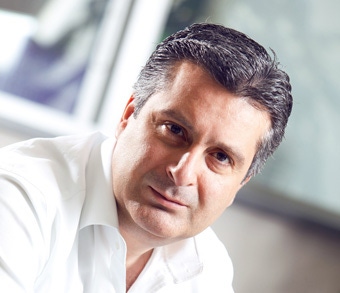Voice is dead but LTE will rescue ARPU, says KCell CEO
Telecoms.com speaks with Ali Agan, who has risen through the ranks of TeliaSonera Group to become CEO of KCell in Kazakhstan. With a young population Agan is keen to deploy LTE and exploit nascent demand for data services.
June 19, 2013

In February of this year, Telecoms.com interviewed KCell CEO Vasel Aral, who steered the Kazakh operator through a successful IPO in late 2012. Aral was recently appointed to President of BA Eurasia within KCell’s parent TeliaSonera and his replacement is Ali Agan.
Here Telecoms.com speaks with Agan, who has risen through the ranks of TeliaSonera Group and most recently held the post of CEO of Ucell.
Drawing on experience of working in several Central Asian markets, both in service provisioning and distribution, Agan says a variety of viewpoints have given him unique insight into his role.
Because most Kazakh consumers are on 2G, with only limited adoption of 3G services, Agan is focused on driving data usage and championing next generation technologies like LTE. Interestingly, he does not see much future for voice—a bold stance for any mobile operator CEO, despite the industry-wide trend towards data usage.
“Needless to say, voice is already history,” he says, right at the start of our conversation. “Even though we are still generating most of our revenues from voice, data is definitely the future. So we will do everything required to expand the data business and increase data quality. This will be mainly through 3G but I’m also interested in getting into 4G,” he adds.
In this regard Kcell will continue to benefit from the experience of its parent company, he says. “We’re lucky to have worked with TeliaSonera Sweden which was the first commercial LTE operator in the world, and at Azercell I launched 3G and 4G, so we will be expanding in the coming years.
“Right now we’re in the process of obtaining a [4G] licence. With 3G the data share of revenue at KCell is 13 per cent and my focus is to increase the share of data of revenue because there is an enormous appetite for data,” he says. “Although the biggest share of revenue is coming from voice today, tomorrow data will be the biggest contributor. So we need to invest in coverage of broadband.”
KCell is pressing the government for a timescale on LTE licence allocation but a date has yet to be set. Given the time needed to draft the terms and conditions of the licences it may be some time before they become available.
Agan’s desire to accelerate the process is based on his belief in the positive effect that new technology will have on his ARPU. “Being owned by TeliaSonera we have the advantage of our parent’s experience with LTE. If you look at ARPU on LTE it is not even comparable with what you see from conventional subscribers,” he says.
While Kcell waits for its licence, though, the LTE ecosystem will expand. “We are aware that the terminal portfolio needs to be expanded and this is an obstacle that needs to be overcome,” he says. “In Kazakhstan about 50 per cent of the total devices in our user base support 3G. But in most countries in this region it is in the low 20s. But just think about devices or demand for mobile data ten years ago, and compare that to how the market is rapidly expanding now.”
But while operators in Western Europe struggle to devise tariffing strategies to make LTE pay for itself, Agan is relaxed about this element of his business. “If you know your customer behaviour, then coming up with new tariffs, products and services shouldn’t be an issue,” he says. “The demography of the Kazakhstan market is still quite young compared to other markets – 50 per cent of the population is under 20 and at the same time GDP on a year on year basis is increasing. The situation in this region is not as challenging as in Western Europe.”
That young demographic will be quick to adopt services from internet players that place great demand on the KCell network. So how does Agan see his relationship with the powerful players in consumer internet?
“We do and will continue to work with content providers,” he says. “Our strategy is not like other network operators in that we are not getting into the content business itself, so we will form partnerships with OTT players. But, speaking for the industry in general, the biggest players in the OTT space are using the network and sooner or later there will arise some way of mutually benefitting both in terms of revenue,” he says.
“Consider that the network is a highway, and the operator spends billions of dollars to build this highway. My revenue model is a toll booth on the highway so I charge traffic on a per car basis, but if you have a big truck then I have to charge more, that’s the only way,” he adds.
Read more about:
DiscussionAbout the Author(s)
You May Also Like









.png?width=300&auto=webp&quality=80&disable=upscale)

_1.jpg?width=300&auto=webp&quality=80&disable=upscale)


.png?width=800&auto=webp&quality=80&disable=upscale)